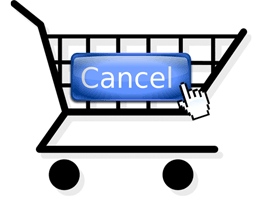|
View in browser
|
 |
| ISSUE 37 |
| The Wine Trade's Review - A Fortnightly Publication |
 |
|
The Pressing Matter
|
 |
| What we can all learn from the United Airlines PR disaster |
| What can we learn? I don't think we need 700 odd words working that out? |
| OK, calm down. Otherwise you’ll be first in the queue to receive the kind of personalised service that United Airlines dished out this week to an unsuspecting customer, who was literally dragged off a plane for not giving up his seat on an overbooked flight. What’s worse for the United Airlines’ PR machine was that it was all captured, shared and then spread like wildfire around the world through social media. Showing once again how fast any one incident, particularly bad, and however isolated, can now become universally known in a matter of hours. |
| Yes we get that, but what’s your point? |
| Give me a chance. It might have been a bad situation, but it is a good illustration of how careful any brand, business or retailer now has to be to ensure it is on its best behaviour in everything it does. That could be internally amongst its own staff, publicly, face-to-face with customers, or online through all the various social media touch points there now are. Make the tiniest slip and you can lose years, even generations, of good will and trust in your brand. |
|
|
| “There are now huge rewards for those brands and businesses that really do connect with their customers and are seen as being relevant and helpful in their lives ” |
|
|
| OK, tell us more. |
| A new YouGov study shows how damaging losing your reputation can be. Its new report, Inside the Mind of a Brand Boycotter, shows over a fifth (21%) of consumers have boycotted a brand due to bad publicity. Even more worrying is that nearly three quarters (67%) never go back to that brand again. It does not need to be a full-blown scandal on the scale of United Airlines either. The biggest reason for turning your back on a brand or business was tax evasion (48%), how staff are being treated (40%), perceived cover-ups (40%), workers in supply chain being treated badly (36%), corruption (36%) and faulty products or product recalls (35%). |
 |
| But surely if you’ve got a brand or service they want they will come back eventually? |
| Don’t be so sure. Of the 23% of disenchanted consumers who said they do exactly that and go back to a brand, they do so reluctantly and only 1% spend more than they did before. Nearly three in 10 (28%) will go back if they think a company has redeemed their ways, or improved their service and behaviour (24%). But 29% said they only did so because the brand was so big it was too inconvenient not to use it. |
| So do you have any good news for us? |
| Well, on the flip side there are now huge rewards for those brands and businesses that really do connect with their customers and are seen as being relevant and helpful in their lives. People’s expectations are also not as high as we may think. Just a little touch can go a long way as those brands that have been able to offer what have become known as ‘random acts of kindness’ have shown. |
| How do you mean? |
| Just little touches from offering a lollipop at the end of a meal, to handing out a random free cup of coffee or a glass of wine to someone just because you like their name. Clearly businesses can’t let their staff just take it up on themselves to become year-round good samaritans. By building discounts, promotions, premiums and added value items into their roles they can choose to hand out is not only great for their customers, but gives them enormous job satisfaction too. Anything that means they don't have to go and ask their boss what they can do when things go wrong. |
| So making good out of a bad situation? |
| Absolutely. National retail institutions such as John Lewis and Marks & Spencer have built their reputations on how well they handle customer complaints. But how good is your business at doing the same? After all, the stories and retail moments we all best remember are when things have gone wrong and that amazing bit of service you received to put things right. That’s when brand power is at its strongest regardless of what size you are. Ironically, it has probably never been a better time to get a seat and a good deal on a United Airlines plane. |
|
 |
|
On the Grapevine
|
We take a look behind the headlines of the major news stories and assess what impact
they may have on the trade |
|
|
| Vivino’s top 5 steps to success... |
 |
| Some interesting analysis on Vivino, the US wine rating and sharing app, this week. It reveals that its top five searched for wines by US consumers has Gallo’s Apothic Red top followed by Marqués De Riscal Rioja Reserva, Meiomi Pinot Noir, Casillero Del Diablo, and Catena Zapata's Cantena Malbec. What’s the common link between these wines? First off, they all share some, if not all, of the same on trend “radical reds” style characteristics. Namely: smooth, fruit/fruity, sweet, cherry, rich, balanced, oak, chocolate and vanilla. All put together with generous splashes of residual sugar. They’re all between $10 and $22; they sound and look classy and a bit European, even if they’re not; they’re in mass distribution; and are the same - year in, year out. If you can get your wines to do the same then Vivino’s number crunchers say they’ll fly off the shelves. |
|
|
|
| Why do we give up on shopping online? |
 |
| Fed up seeing the big discrepancy between the number of people who have gone shopping on your website compared to those who actually pressed the buy button? Well, don’t worry you’re not alone. On average 74% of us abandon our shopping carts online, according to salescylce.com. A third give up because they were just window shopping; 23% don't like the shipping costs or delivery times; 18% thought it was too expensive or wanted to compare with another site; 15% would rather buy in-store; 6% had payment issues; and finally 4% simply got logged out or had connection issues. In terms of where on the site they were when they gave up then 53% logged off when they saw the final price; 26% when asked for personal details; and 21% at the payment stage. But don’t give up because 87% of users said they would still happily go back and complete the order at another time. |
|
|
|
| Biodiversity takes wines and vines to another level ... |
 |
| If you are still trying to work out the difference between organic, natural and biodynamic wines, then here’s another one to throw into the mix. Wines made in accordance with the biodiversity of the area their vines are grown in. It is an area that is gaining more interest from wine producers and classic regions such as Soave, which has embarked on a long term study with the World Biodiversity Association to assess what it describes as the “thermometer” of the land and how healthy its vineyards, soil and vegetation actually are. It involves assessing microbes in soil, air and water as well as protecting insects and helping vegetation growth. What’s more, it involves being certified for your biodiversity prowess and a scoring system out of a 100 to determine how well a particular vineyard is doing on a biodiversity level one year to the next. |
|
|
|
| Will new data protection laws be bad for business? |
 |
| We may be doing our best to get out of the EU, but we will still be very much part of it when the new European Data Protection Directive comes in to force in May 2018. It potentially has wide ranging implications for the wine industry and particularly for retailers and brands used to direct mailing and targeting customers with personalised offers. Under the new act we will all have greater control over our personal data and businesses will have to go to much further lengths to get the explicit consent of individuals to receive any sort of mail, targeted or not. It is already causing ripples throughout the advertising and branding worlds and will be particularly damaging to those businesses that rely on third parties and affiliates to do their marketing for them as they will be relying on them to collect the right level of consent. The only hope is we will be out of the EU before anyone is liable for any fines for breaching the new act. |
|
|
 |
|
My week with...
|
 |
| How have you helped develop the Kingsland Drinks business? |
| When I first joined Kingsland in 2014, it had a really strong reputation for its service levels and was a company that could be trusted: which are really the two key attributes you want as a supplier. We looked at how we could develop Kingsland for the next five to 10 years and thought there was an opportunity to offer a 360 degrees service, that looked at everything from wine sourcing, bottling, to consumer insights, brand development, design, packaging, sales and marketing. |
| It is an approach that appears to be working? |
| We have grown 60% in turnover over the last three years and taken on 100 more people to 370 in total. We have gone from handing 70m litres of wine in 2014 to 100m now and have further plans to grow significantly. It is why we have changed the name of the business from Kingsland Wines to Kingsland Drinks. Although 95% of what we do is wine we are now also handling more spirits and general alcohol beverage products. You have to have one eye on the future. The fusion category, for example, is the fastest growing area of our business. It is why we have invested in our own British winery to make bespoke products from there. |
| Tell us about WinePro, your consumer insights model that looks at consumer groups but also the occasions when they want to drink and why? |
| It is no longer good enough just to know that millions of consumers are buying X wine. That is not good enough. WinePro allows us to drill down far more than that. Our challenge is to provide the most relevant consumer insights and data. We can offer clear independent advice to our customers. We can show them where the new real opportunities are. |
| Kingsland is also having an impact on the economy of the north west? |
| More than half of our staff all live within a five mile radius of the company. That is very important to us. We are also very proud of our history and the fact we are using the Manchester Ship Canal to bring wine down by barge from Liverpool to our facilities just outside Manchester. |
| As well as making and developing brands for third parties you also produce your own brands like your fusion brands Live and Mr Gladstone’s Curious Emporium. Why? |
| We will only bring one of our own brands to market if our consumer insights demonstrate to us that there is a genuine USP and point of difference to other mainstream brands and that they can bring value to the category. |
| Where do you see big opportunities in the future? |
| The on-trade is now understanding the consumer far better than it has ever done thanks to the great work being done in the casual dining sector. We see lots of potential growth there. |
| You seem very happy with your role? |
I feel like I have got the best job on the planet. It is definitely the best job in my career.
|
|
 |
| What’s happening north and south of the world’s wine equator? Here’s our fortnightly wrap up of the latest winery, viticulture and vintage news |
|
|
 |
 |
- First quarter wine exports from Georgia were up 85% year-on-year.
- 12% of the 70% of Americans that buy alcohol did so online in the last six months, with wine accounting for 42% of purchases, spirits 35% and beer 29% (Nielsen).
- French wine export sales in 2016 fell 0.8% to €7.9bn as the fall in UK sterling hit Champagne sales in particular. Volumes were down 1.8% to 135m cases.
- Bulk wine imports to China in 2017 topped 21 m/l in January and February, to $17.6m, up 37% in value and 39% in volume. Bottled imports fell 1% in volumes and 7.8% in value to $353.2m for the same time. Sparkling wines were down 14% in both volume and value.
- Chinese retailers are circumnavigating local tax rules by using legal cross border e-commerce schemes to sell imported wine at 21% tax instead of the usual 48%.
|
|
 |
 |
- Chilean wine exports were up 12.4% in January and February to the value of $215.9 million with China its number one market. Exports reached 68.2 million litres, up 11.9% on 2016.
- The GDP of Marlborough, New Zealand’s key wine region, jumped 32.3% between 2011 and 2016 (Statistics New Zealand).
- New Zealand’s wine exports to the US have increased from 2.5 m/l in 2000 to 61 m/l in 2016 (New Zealand Winegrowers). The value of those imports are now higher than Australia’s, says Rabobank.
- Pricing of Cabernet Sauvignon from the Southern Hemisphere has gone up 70% since mid 2015 (VINEX).
- Tasmania’s wine harvest will be a third lower this year after a challenging growing season with producers expected to bring in 10,000 tonnes compared to the record 15,000 last year.
|
|
|
 |
|
A week to remember
|
|
|
- Port’s ambition to become more relevant to younger people continues with Churchill’s latest advertising campaign that urges us all to “Rethink Port Wine” with a series of different executions to show how Port is now being enjoyed by all age groups. Like this apparently typical Sunday afternoon occasion, where a grandson and grandfather take a selfie of each other sharing a bottle of Late Bottled Vintage Port (Churchill’s of course).
|
- Here’s a novel idea. A wine competition where the winners are chosen by the public. Welcome to the People’s Choice Wine Awards which does what it says on the tin. Entries are open to any wine business until June 9 and cost £50 a wine and covers 27 categories. The awards take place in London on October 5. More details at peopleschoicewineawards.com.
|
- The increasingly important convenience store sector’s understanding of the wine category was given a boost this month with the news that drinks industry stalwart, John Mills, formerly of InterContinental Brands, Constellation Wines and the Gaymer Cider Company, has become managing director of Landmark Wholesale, one of the most influential players in the symbol and c-store industry.
|
- If you have vegan, or even vegetarian-friendly wines amongst your range, then you may want to hook up with the first Vegan Festival to take place in the UK. Three weeks of activity are being planned by organisers, Animal Aid, between May 20 and June 10. It all kicks off at Vegfest in Bristol and will include restaurant and retail promotions as well as live events and tastings. Find out more at veganfestivalofbritain.org.uk.
|
|
A week to forget...
|
- It’s a bitter sweet time for the folks at Majestic Wine as they say goodbye to John Colley, managing director of its retail arm, who is leaving the company to take up a new role as chief executive of Hobbycraft and to be closer to his family. Colley has had a major influence on the turnaround story at Majestic over the last two years and will be a big loss to not just the Majestic business, but to the wine retail sector as a whole.
|
|
|
 |
|
London Wine Fair: what to expect...
|
|
With just over a month to the London Wine Fair between May 22-24, Grapevine starts its regular series of highlights from the show.
|
- There will be up to 700 exhibitors at this year’s fair showing in the region of 10,000 wines from 40 countries.
- English wine will be a key feature of the 2017 show and is one of the five top reasons visitors have for visiting.
- New exhibitors at this year's show include Wines of Germany, Inter Rhône, Châteauneuf du Pape, The Rothschild Collection, Camara de Alava, and Vinadeis.
- Wines Unearthed offers producers looking for representation in the UK the chance to present their wines with up to 100 wineries expected to take part.
- Esoterica will again showcase the best independent and specialist wine importers with up 70 businesses showing 14 wines each.
- The show will feature a Grapevine set piece debate on the implications of Brexit on the wine industry, featuring speakers including Miles Beale, chief executive of the London Wine Fair, and leading MPs Andy Slaughter (Labour) and Tim Houghton (Conservative).
- The Pop-up tasting section will offer a wide range of tastings, masterclasses and education sessions on wines from all over the world.
|
 |
|
 |

Quiz
|
| Tom B tops our leader board, yet again, winning our alternative Australian Varietals quiz. Well done.
You win a bottle of ‘Los Haroldos Roble Blend’, courtesy of Condor Wines.
"Condor Wines represents leading producers, award-winning wines and great value from across Argentina, Chile and Uruguay. The Malbec, Cabernet Sauvignon and Petit Verdot blended in the ‘Los Haroldos Roble Blend, 2014’ is from high altitude premium vineyards in the Uco Valley, Mendoza. It was awarded 96 Points and a Gold Medal at the Decanter Awards. RRP £11.95"
To win the next issue’s mystery prize, come top in our South American quiz that covers some winey, and some not so winey areas – play here – good luck!

|
|
 |
| Share Grapevine with a friend |
|
|
|
 |
|
|
Grapevine is published and produced by:
|
|
|
|
|
|
|
|
|
|
|
| Click here if you wish to unsubcribe. |
Copyright © The Hemming Group 2017 The information in this email is confidential and may be legally privileged. If you are not the intended recipient, you must not read, use or disseminate that information. Although this email and any attachments are believed to be free of any virus, or any other defect which might affect any computer or IT system into which they are received and opened, it is the responsibility
of the recipient to ensure that they are virus free and no responsibility is accepted by The Hemming Group for any loss or damage arising in any way from receipt or use thereof.
Registered Office: 32 Vauxhall Bridge Road, London, SW1V 2SS. Registered No: 490200 |
|

